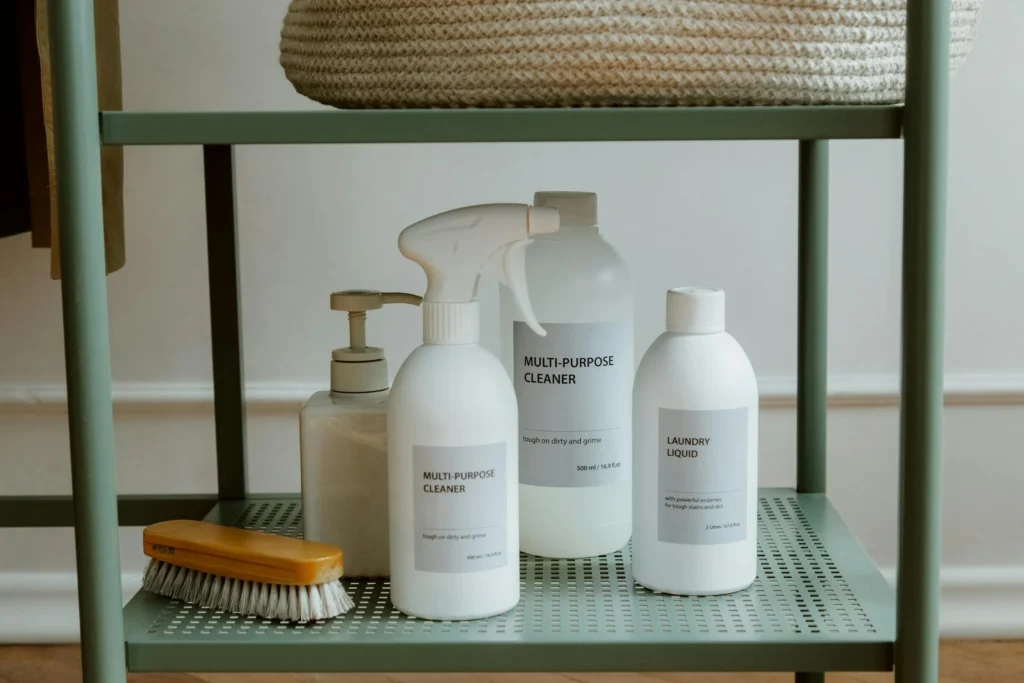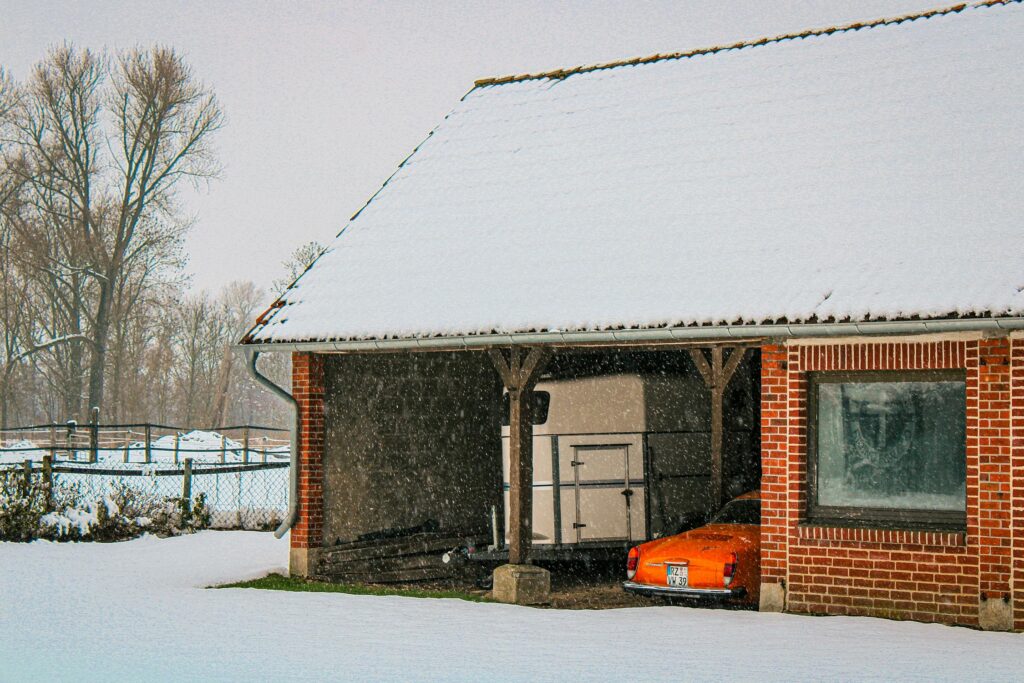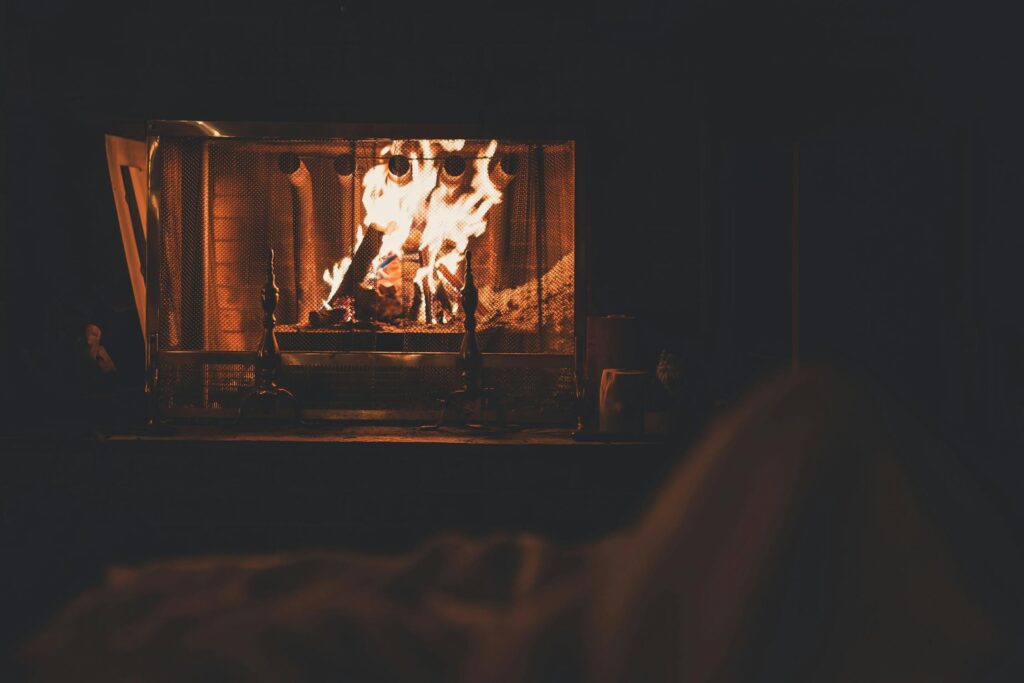Cleaning is not everyone’s favorite thing. There are those who enjoy either the act or the result (or both), and for you brave souls, we are grateful. The rest of us…could probably do better. But sometimes that requires having a clear starting point. What we’ve put together here should help with that.
Keeping a tidy home (or office, or secret lair, or whatever you’re working with) takes more than just a bit of sweeping and dusting, so get ready to bust out the cleaning supplies. There are quite a few areas that go overlooked for quite a while, especially in a dedicated living space. Those oft-neglected tasks are the ones we’ll be prioritizing in the checklists below.
A Quick Overview of the Checklist
To help you better scan the checklists below at a glance, we’ve broken each room/area into a few categories, based on how obvious the tasks are:
- The Usual Suspects: The things you’re likely already cleaning on a daily (or frequent) basis
- The In-Betweeners: Things that you might be able to see, or consider cleaning, but might not do as often as you’d like
- The Lurkers: Tasks that often get overlooked, or that you might not be aware need doing
- Major Concerns: Important factors, reasons why a room needs special attention, etc.
Living/Family Rooms, Hallways, Stairs, etc.
These are the main common spaces in the home, and the transitional spaces. They tend to see the most foot traffic and the heaviest use, as the entire household makes use of them in full (more or less). Small children might not be cooking their own meals or washing their own laundry. But everyone uses the couch, for example.
The Usual Suspects
- The floors (vacuum, sweep, mop, as appropriate)
- Dusting (decorative items and high surfaces tend to have the most)
- Baseboards (including those hiding behind furniture)
- Wiping down furniture (couches, entertainment centers, handrails, etc.)
- Sanitizing high touch items and hard surfaces (remotes, light switches, etc.)
- Cleaning digital screens
The In-Betweeners
- Maintaining floors (repairing grout, waxing/staining, polishing, removing scuffs, etc.)
- Shampooing, washing, and/or scrubbing carpets and fabric items (couches, drapes, etc.)
- Organizing storage
- Discarding old, unwanted items
- Wiping out cabinets and drawers
- Wash walls
- Cleaning light fixtures
- Washing windows, window screens, and blinds
- Cleaning fan blades and motors of accumulated dust
- Cleaning under and behind furniture
The Lurkers
- Wash ceilings
- Wash/dust/clean vent covers and grates
- Cleaning window tracks
- Clean dust from air vents on electronics (TVs, gaming consoles, etc.)
- Maintaining furniture and doors (tightening screws, lubricating joints, touching up wear-and-tear, etc.)
Major Concerns
- Traffic: one of the biggest issues seen by these high-use areas is wear and tear, especially on flooring. Carpet is particularly susceptible to visibly apparent degradation, but even more hardy flooring like tile or wood will show the scuffs over time.
- Electronics: unless you have a background in techno-babble, you might not even be aware that your TV has an intake and exhaust to deal with heat. Which means you won’t know to dust it like you would a fan or air vent.
- Cable management: when properly organized and maintained, the power cords and various cables used by the numerous electronics of modern life don’t present trip hazards or fire risks. under the wrong circumstances, though, they can definitely increase the odds of both.
- “What’s that doing there?”: living spaces tend to accumulate things that most households would keep somewhere else. Messes from food and drinks happen all the time—crumbs, spills, and missing dishes, anyone? Toys can also end up behind and under furniture. But anyone who’s tipped their couch over to clean knows that the surprising possibilities don’t end there.
Bedrooms
The Usual Suspects
- The floors (vacuum, sweep, mop, as appropriate)
- Dusting (decorative items and high surfaces tend to have the most)
- Baseboards (including those hiding behind furniture)
- Wiping down furniture (bed frames, dressers, etc.)
- Sanitizing high touch items and hard surfaces (remotes, light switches, etc.)
- Laundering linens
- Laundering and putting away clothing
- Cleaning digital screens
The In-Betweeners
- Maintaining floors (repairing grout, waxing/staining, polishing, removing scuffs, etc.)
- Shampooing, washing, and/or scrubbing carpets and fabric items (couches, drapes, etc.)
- Laundering pillows and blankets
- Rotating mattresses (in some cases)
- Organizing storage
- Discarding old, unwanted items
- Wiping out cabinets and drawers
- Wash walls
- Cleaning light fixtures
- Washing windows, window screens, and blinds
- Cleaning fan blades and motors of accumulated dust
- Cleaning under and behind furniture
The Lurkers
- Wash ceilings
- Wash/dust/clean vent covers and grates
- Cleaning window tracks
- Clean dust from air vents on electronics (TVs, gaming consoles, etc.)
- Cleaning and sanitizing high-touch electronics components (keyboards, mice, etc.)
- Maintaining furniture and doors (tightening screws, lubricating joints, touching up wear-and-tear)
- Cleaning, sanitizing, and maintaining personal items (glasses, phones, medical equipment, etc.)
Major Concerns
- Second verse, same as the first: bedrooms share a lot in common with other living spaces. Daily traffic in repetitive patterns, potential messes from food and trash, those sorts of things.
- Replace when needed: unlike living rooms, some bedroom items benefit from regular replacement. Pillows, blankets, and other linens, for sure. Even mattresses won’t last forever, and you’ll experience more issues keeping a worn out mattress than keeping a worn out couch.
- Personal property: there are a wide range of personal items and effects that we use daily and tend to keep in our bedrooms. This could include everything from phones, to medical equipment like CPAPs, to a host of other things. Odds are, we don’t clean them as often as would be prudent.
- Striking a cord: cable management matters in the bedroom as well, especially when outlets aren’t very conveniently placed. What’s more, using the wrong power cables and/or adapters for things like phones, tablets, and laptops can have negative effects on both the longevity of the device, and the potential risk of fire hazard.
Bathrooms
The Usual Suspects
- The floors (vacuum, sweep, mop, as appropriate)
- Dusting (decorative items and high surfaces tend to have the most)
- Baseboards (including those hiding behind furniture)
- Wiping down furniture (cabinet doors, etc.)
- Sanitizing high touch items and hard surfaces (light switches, counters, hair appliances, etc.)
- Cleaning and disinfecting less sanitary areas (toilet surfaces, floors, faucet hardware, etc.)
- Laundering linens
- Cleaning glass surfaces (mirrors, shower doors, etc.)
- Wiping down showers/tubs
The In-Betweeners
- Maintaining floors (repairing grout, waxing/staining, polishing, removing scuffs, etc.)
- Washing or replacing shower curtains and liners
- Organizing storage
- Wiping out cabinets and drawers
- Discarding old, expired items
- Wash walls
- Cleaning light fixtures
- Washing windows and window screens (when applicable)
- Cleaning exhaust fans
- Scrubbing tub/shower surfaces
- Scrubbing grout (when applicable)
- Descaling and removing rust or soap scum as needed
The Lurkers
- Wash ceilings
- Wash/dust/clean vent covers and grates
- Cleaning window tracks
- Sterilizing bathroom cleaning tools (plungers, scrubbers, etc.)
- Cleaning and sanitizing high-touch electronics components (keyboards, mice, etc.)
- Maintaining doors and hardware (tightening screws, lubricating joints,polishing, etc.)
- Repairing grout and caulk
- Maintaining/cleaning/unclogging drains as needed
Major Concerns
- When it rains…: as a source of water, bathrooms present unique concerns, especially if members of the household are less diligent in cleaning spills than they could be. Most bathrooms leave something to be desired in the “water resistance” department, but it might not be readily obvious. Be on the lookout for signs of water damage (bubbling, warping, deformation, discoloration), or you’ll be finding problems much later than you’d like.
- Going viral: along with the food preparation areas of the home, the bathroom presents some of the biggest contamination concerns in the whole house. You may not be able to do much about family and guests bringing a cold home, but staying on top of sanitation in the bathroom can help prevent more annoying problems like pink eye.
- Don’t cross the streams: technically, every room with a faucet must be built with certain safety features to combat risks related to electronic devices. One of the most widely used tools here is known as a GFCI outlet (the ones with “RESET” buttons on them). If there’s any doubt whether your home was built with something like that, it might be work a little investigation for your own safety.
Kitchen/Dining Room
The Usual Suspects
- The floors
- Dusting
- Baseboards (including those hiding behind appliances)
- Scrubbing stove tops and countertops
- Sanitizing high-touch objects, food preparation areas, and floors
- Laundering linens
- Emptying trash
The In-Betweeners
- Maintaining floors
- Washing windows, curtains, and/or blinds
- Organizing storage
- Wiping out cabinets, drawers, and the fridge
- Discarding old, expired items
- Wash walls
- Cleaning light fixtures
- Scrubbing sinks and faucets
- Scrubbing grout
- Descaling and removing rust or soap scum as needed
- Scrubbing and sanitizing trash receptacles
The Lurkers
- Wash ceilings
- Wash/dust/clean vent covers and grates
- Cleaning window tracks
- Cleaning under and behind appliances
- Check electrical and plumbing connections
- Maintaining furniture, doors, and hardware
- Repairing grout and caulk
- Maintaining/cleaning/unclogging drains as needed
- Dusting/cleaning fans, vents, and coils, especially on appliances (like the back of the fridge)
- Cleaning and draining the dishwasher
- Cleaning and scrubbing the oven
Major Concerns
- Cooking up trouble: like bathrooms, kitchens are a source of water, and present many of the same risks and potential issues, so keep an eye out for signs of water damage.
- Bad apples: food prep areas are also a contamination risk, for a number of reasons. Food waste can become a petri dish if not handled properly. Expired food can similarly lead to problems. And most of us could stand to do a little better with our safe food handling skills—put that pizza in the fridge if you plan to eat it in the morning.
- High voltage: like bathrooms, kitchens have appliances and water in close proximity, which comes with risks. Kitchens differ, though, in that there are more appliances, and they use more power, especially the oven. That outlet is a flight risk all by itself, so handle with care.
- Greased lightning: while grease does present some safety concerns as well, it also presents unique challenges when cleaning, especially when it accumulates or is used in large quantities (both of which can and do happen in kitchens).
Offices, Craft Rooms, and Storage Spaces
The Usual Suspects
- The floors
- Dusting (probably more here than anywhere else)
- Baseboards
- Wiping down furniture
- Sanitizing high touch items and hard surfaces
- Cleaning digital screens
The In-Betweeners
- Maintaining floors
- Shampooing, washing, and/or scrubbing carpets and fabric items
- Organizing storage
- Discarding old, unwanted items
- Wiping out cabinets and drawers
- Wash walls
- Cleaning light fixtures
- Washing windows, window screens, and blinds
- Cleaning fan blades and motors of accumulated dust
- Cleaning under/behind furniture and other objects
The Lurkers
- Wash ceilings
- Wash/dust/clean vent covers and grates
- Cleaning window tracks
- Clean dust from air vents on electronics
- Maintaining furniture and doors
Major Concerns
- “How long has that been there?”: as spaces with less traffic, and where items tend to be stationary for longer periods, messes that aren’t noticed right away can go undetected for a long time. Not so bad if it’s some paper scraps or misplaced socks. Bit more of a problem if it’s a half-eaten sandwich.
- Taking out the trash: these areas still tend to accumulate trash, even if “trash” just means objects we keep but don’t need to. In addition to regular disposal of waste, it’s good practice to sort through the junk occasionally and downsize where possible.
- Plug it in, plug it in: you may have devices, appliances, and/or tools in these spaces, you may not. If you do, then maintenance and cable management advice applies. If not, well, then carry on. Nothing to see here.
- Incog-neat-o: it’s embarrassingly common for rooms like these to become catch-alls, and for those of us with limited daylight hours (read: all of us) to just close the door and hope guests don’t notice the mess. Helpful in a pinch, but not really a long-term solution to our organizational needs.
Laundry/Utility Rooms
The Usual Suspects
- The floors
- Dusting
- Baseboards
- Wiping down cabinets and appliances
- Sanitizing high touch items and hard surfaces
- Emptying lint traps
The In-Betweeners
- Maintaining floors
- Shampooing, washing, and/or scrubbing carpets and fabric items
- Organizing storage
- Discarding old, unwanted items
- Wiping out cabinets and drawers
- Wash walls
- Cleaning light fixtures
- Washing windows, window screens, and blinds
- Cleaning fan blades and motors of accumulated dust
- Cleaning under/behind furniture and other objects
- Replacing filters, draining tanks, and cleaning vents
- Clearing out cobwebs
The Lurkers
- Wash ceilings
- Wash/dust/clean vent covers and grates
- Cleaning window tracks
- Maintaining furniture, doors, and appliances (with professional help as necessary)
Major Concerns
- Heart of the home: the laundry appliances and the HVAC units are the most resource-intensive things in the house. They use more power, fuel, and/or water than anything else, and they experience wear and tear accordingly. Keeping them maintained is better for efficiency, safety, and your pocket book.
- Shocking news: these rooms have the water/electricity issues of kitchens and bathrooms, but moreso. Worse, we tend to spend less time in them, so we get fewer opportunities to monitor for the telltale signs of underlying problems.
- Utilitarianism: these spaces aren’t always meant to be showrooms, so to speak. Floors might be bare concrete, walls may be unfinished, and really, where would guests even sit? It can still be organized and clean, though. Even if no one else sees it, you will know, and maybe that’s enough.
At Homeowner.org, we’re here to guide you along the way in your journey regarding all things related to buying, owning, and loving your home. Check out our site for more today.



